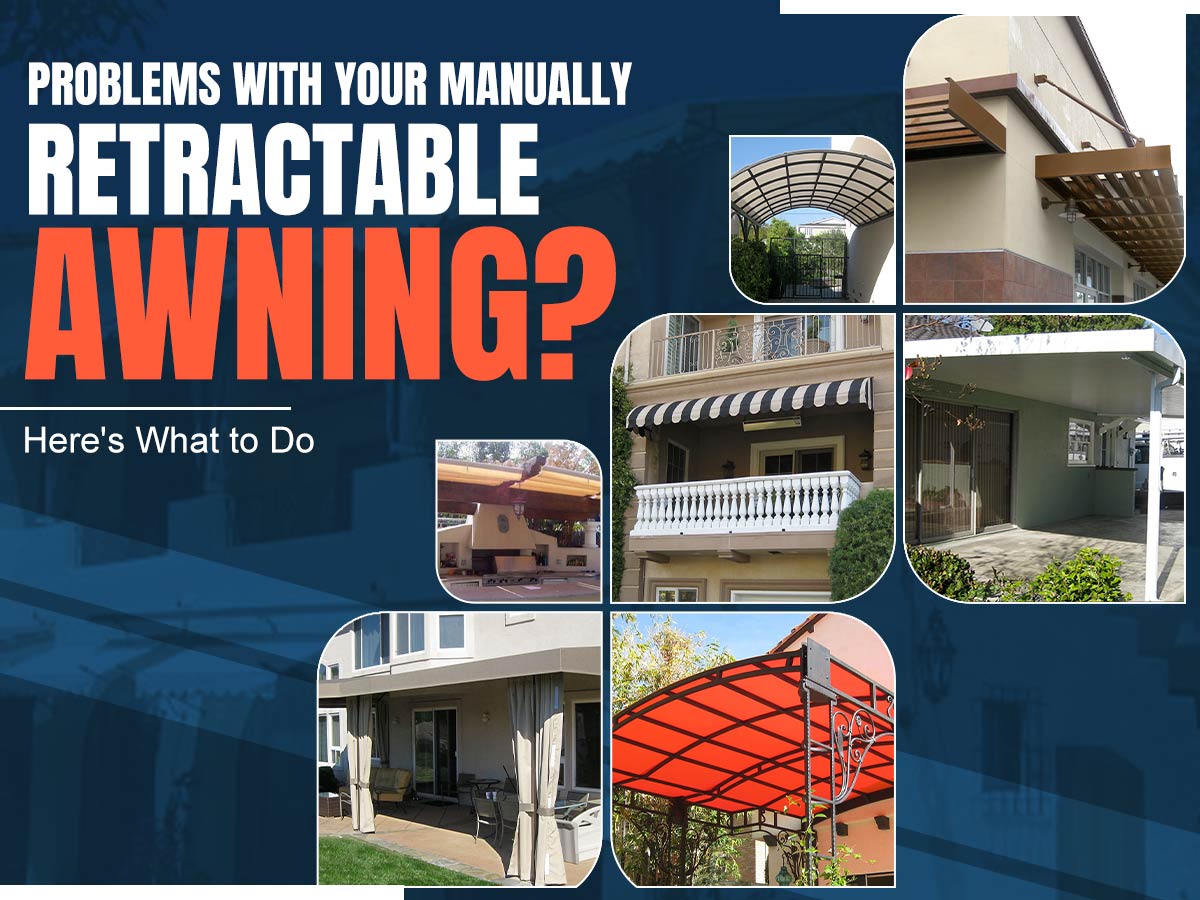Fabric Sagging
A retractable awning’s fabric loosens with overextension, causing sagging. If you have faced this, reverse the cranking direction to tighten it. Additionally, while reverse cranking does the trick, check the fabric’s rolling. Ensure it rolls over the roller tube’s top instead of going under it.Cracking/ Knocking
It is a typical problem our clients often seek a solution to instead of trying other awning types. The problem is little but very annoying because it makes cracking or knocking sounds. Although you may think it is malfunctioning, it may be the loose brackets. Ask your awning engineer to secure the square bar or torsion in the mounting brackets before tightening the mounting bolt to bring the lock over the bar.Sun Damage
There is no way to protect an awning from the sun. Constant sunlight exposure burns away the color and integrity, causing it to fade. The only preventive measure here is to slow down this inevitable process. Frequently sweep the awning to remove dust and debris before rinsing it with mild soap (use a hose to reach hard-to-access corners). Avoid pressure washing to eliminate the risk of tearing the fabric.Wind Damage
You can close retractable awnings when you don’t need them; it is what makes them so popular. However, they are incapable of handling strong winds. So, retract them when not in use. Electrical retractable awnings are beneficial if you have an automated motion or wind sensor to pull it back when strong winds hit.Rain Damage
We understand you installed awnings for your home or store to protect yourself from the sun and rain. But they may not withstand everything you throw at them. An awning that fails to repel rainwater will instead accumulate it. This problem is common in awnings without sufficient angle or pitch on the fabric and arms. When water begins to pool, you can do two things. Pitch your awning down to prevent water from pooling, or retract it immediately.Also Read: What is the Best Awning Material for Your Window?
Snow Damage
Likewise, snow is another natural element your awning protects your place from but also damages itself in the process. Accumulated snow can cause severe damage to the fabric. It can ruin moving parts, and its weight can bend the frame. So, when you experience snowfall, remove accumulated snow before retracting it to prevent further accumulation.Must Read: How to Clean an Awning? Best Methods & Techniques
Mold Issues
Mold and fabric are inseparable and not for good. Mold quickly grows on awning fabric because it is frequently exposed to heat and humidity, creating a habitable environment for mold. We recommend removing any visible mold by spraying water with a hose before applying a mildew remover. Do not retract the awning before it dries.Insects and Rodents
This discussion may be extensive because insects and rodents won’t let your awnings go. Awnings provide a comfortable place for bees, which risks damaging the product’s parts and stinging you. The solution? Retract the awnings when unused. Insects will also visit your awning to look for a home if you leave food and drinks or trash on the patio or yard. If you own a restaurant, it is a point you must remember. Even critters can find awnings a suitable place to live. The only way is to keep birds from building a nest. If a beehive or nest already exists, hire professionals to do it for you.Choose your favorite: Collection of various awning styles
Conclusion
Installation may be challenging, but fixing retractable awning problems is easy. Consult a reputable custom awning and canopy provider to get the best solution.You may also read: How Can You Measure The Size Of An Awning?

